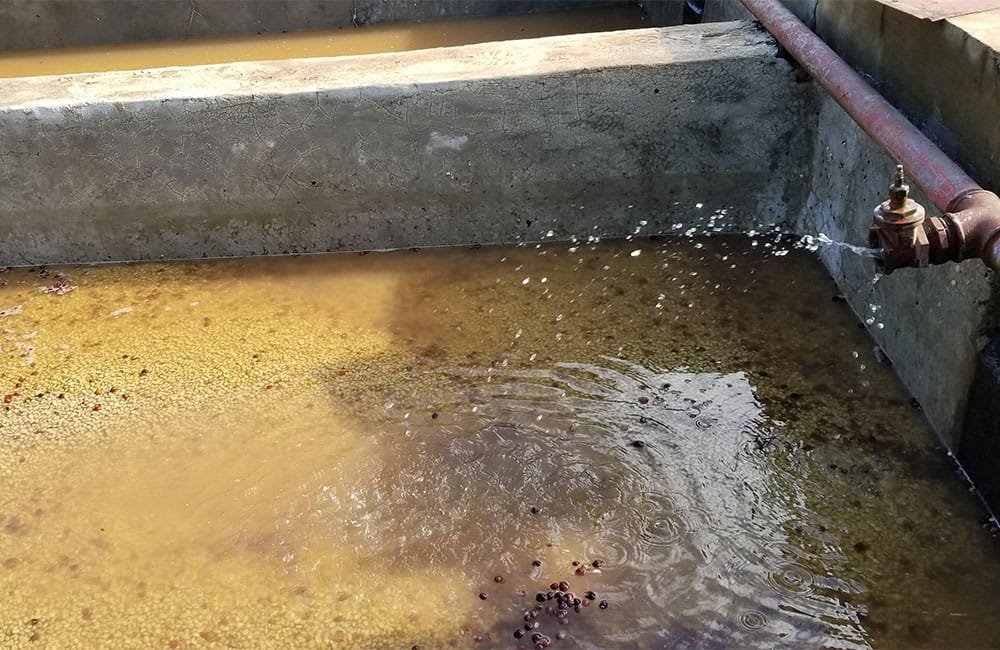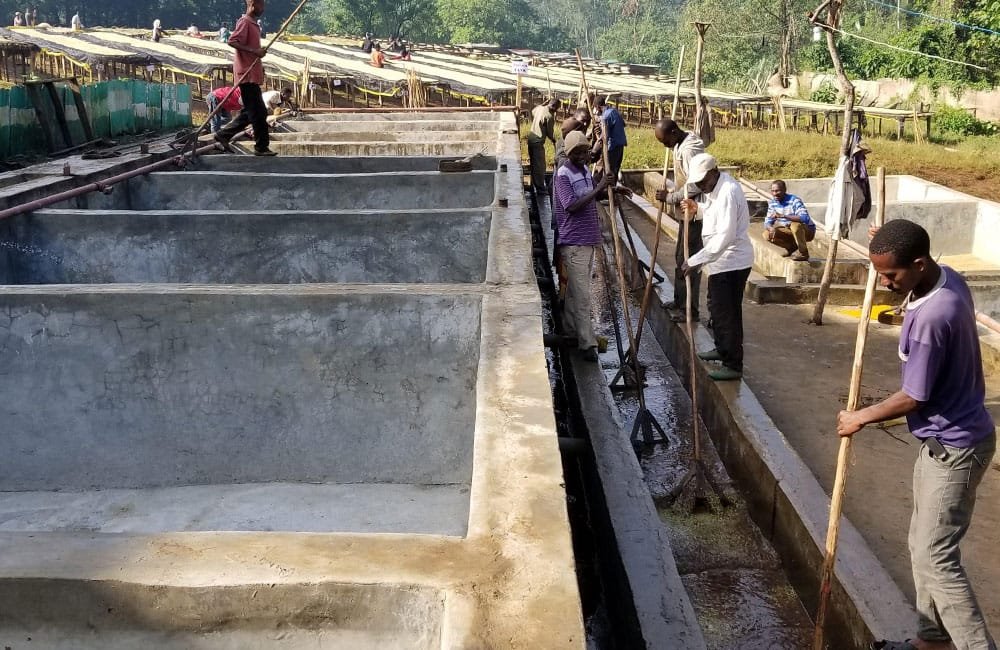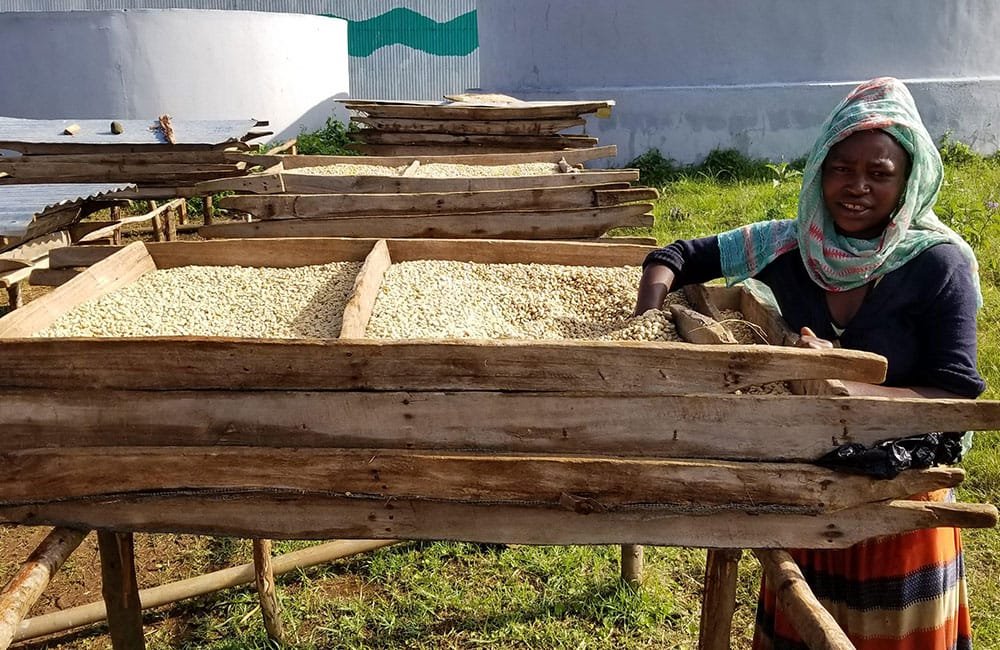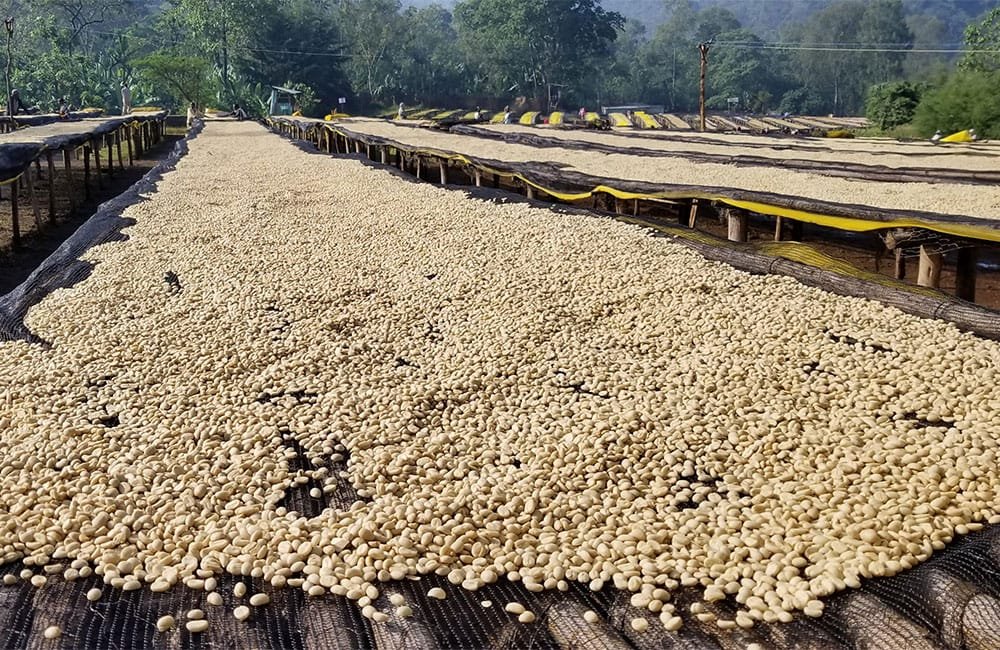High altitude coffee from the Reko smallholders
About the Reko smallholders
Reko refers to the coffee grown by a small community in the Yirgacheffe region of Ethiopia that processes their coffee at the Aricha washing station.
The name refers to the Reko-Mountain, a tall and skinny mountain that towers above the hills of Kochere.
Reko, translated in Afaan Oromo, means challenge.
It refers to the challenge of climbing the Reko-mountain.
Adham and Faysel, managers of the Aricha washing station, adopted the name and its symbolic value.
It is their challenge to cultivate the best Yirgacheffe coffee.
Coffee in Yirgacheffe
In a country that has an estimated 10,000 varieties of coffee, what makes Yirgacheffe coffee unique?
A major factor is the altitude of the mountains in this region of southern Ethiopia.
Contrary to what you might have in mind, the high altitude actually makes it tougher for coffee plants to produce beans.
Tough sounds bad, but in this case, it works in favor of flavor.
The harsher conditions at higher altitudes means trees need to work harder to bear fruit, so the coffee beans take longer to mature.
Because they spend a longer period on the tree, they have more time to absorb sugars and flavors, resulting in a fuller and more developed taste.
Yirgacheffe coffees give a few of the finest developed tastes Ethiopia has to offer.
The Yirgacheffe coffee flavor profile tends to have more acidity than other Ethiopian coffees graced with floral and fruity notes.
The body of Yirgacheffe coffee is often light and well-balanced. The region produced both washed and natural sun dried coffees.
Yirgacheffe is one of the first regions in Ethiopia to use the more modern washed method (starting in the 1970s)
Harvest and post-harvest in Yirgacheffe
Gedeo smallholders, a zone in the Yirgacheffe region, have grown coffee as a cash crop for decades.
They grow a mix of local landraces – such as Kurume and Wolisho – and more disease-resistant cultivars from the Jimma Agricultural Research Center.
The typical harvest season for Yirgacheffe coffee is from October to December.
Once the cherries make their way to washing stations, they go through the rigorous process of soaking, fermentation, cleaning, and drying.
Coffee processors produce both natural sun dried and washed coffee.
Washing stations purchase cherries from smallholders in the surrounding area since there aren’t many large farms here.
A typical Yirgacheffe washing station might work with several hundred smallholders in the vicinity.
The Aricha Washing Station
If you’re looking for floral and complex-tasting Yirgacheffe coffees, Aricha is the place.
The recently revived washing station collects coffee cherries from Yirgacheffe’s most potent coffee forests.
The washing station provides an income for surrounding communities.
And coffee roasters find the finest natural and washed grade-1 Yirgacheffes on the market.
Today Aricha is a Yirgacheffe coffee-hub. About one-thousand smallholders from different communities come to Aricha to sell their cherries.
During collection, Adham marks the lots per community to ensure traceability.
In the hills surrounding the station, you find four coffee communities; Aricha, Gersi, Idido, and Reko Onancho.
All four communities submitted micro-lots for the 2019’ Ethiopian Cup and ranked among the top-scoring coffees within the auction.
Each farming family received a portion of the auction premium to improve their livelihoods.
When you search for lots from Aricha, be sure to look for the community names as well.
The Aricha washing station is an example for neighbouring washing stations, they sustain coffee communities and deliver amazing coffee, year after year.














